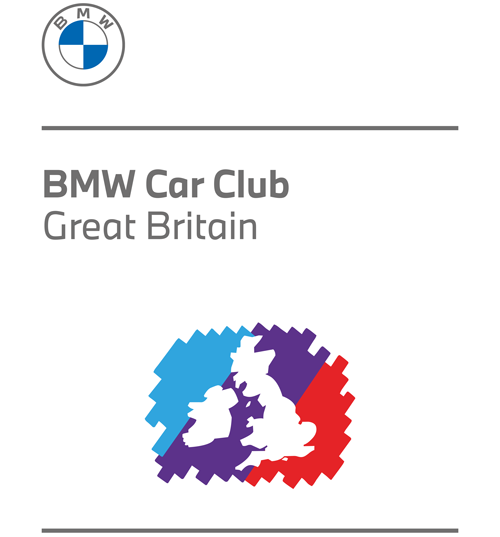The arrival of the all-new BMW 1 Series heralds the dawn of a new era for this successful model that has consistently combined handling excellence, practicality, technology and quality.
This beauty will be on sale from September with prices starting from 24,430.
Source: BMW Group / PressClub United Kingdom
Now in its third generation, the BMW 1 Series features a dynamic design, roomier interior, a raft of cutting-edge technologies as well as BMW’s trademark agility and superior performance. It features a shorter bonnet and significantly more space within a footprint almost identical to that of its predecessor. At 4,319 millimetres, the new BMW 1 Series is five millimetres shorter, 34 millimetres wider and 13 millimetres higher. At 2,670 millimetres, the wheelbase is 20 millimetres shorter.
There have been a number of design changes including a new headlight arrangement, a more wedged shaped silhouette and a pronounced ‘shark nose’. At the front, the BMW kidney grille is larger and, for the first time in this model range, the kidneys merge in the middle. The range-topping BMW M135i xDrive features a distinctive grille with a mesh design instead of the classical bars.
Viewed from the side, the BMW 1 Series features a distinctive window graphic enhanced by two character lines. One runs below the door handles from the front wheels to the rear wings, while the other starts in the lower part of the front door before lifting towards the rear quarter. In addition, the greenhouse is elongated with the traditional Hofmeister Kink incorporated into the C pillar.
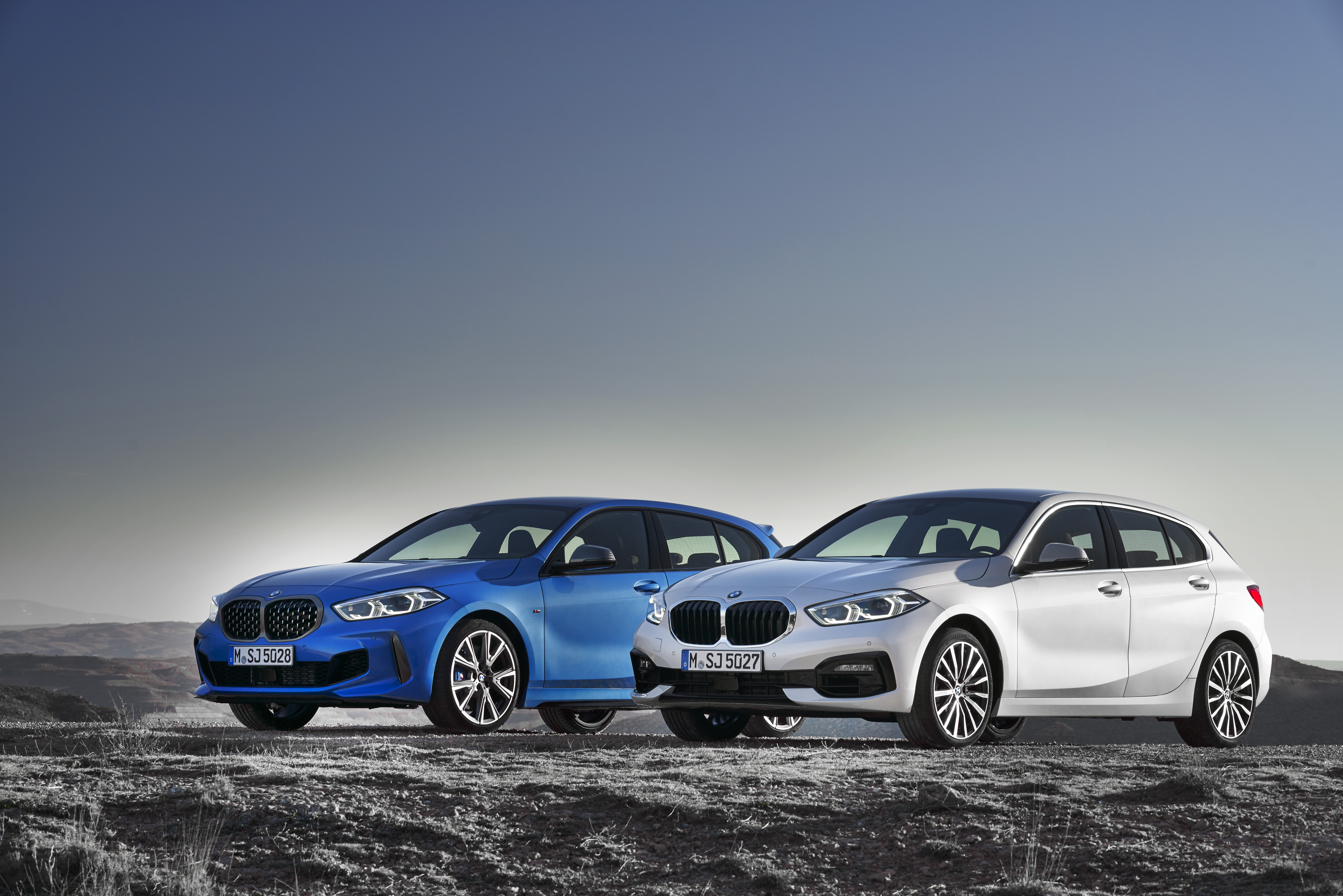
Increased interior and boot space
The front-wheel-drive architecture with transverse engines and a lower centre tunnel offers the occupants more space than in the predecessor. This applies especially to those in the rear seats. Access is easier and there is an extra 33 millimetres of kneeroom available. Rear headroom is up by 19 millimetres when the outward opening panoramic sunroof is fitted. Rear passengers also enjoy 13 millimetres more elbowroom, while the driver and front passenger get extra 42 millimetres in this respect. Luggage compartment capacity rises by 20 litres to 380 litres (1,200 litres with the rear seat bench folded down). The minimum width of the luggage compartment has also increased by 67 millimetres. An electrically operated tailgate is now optionally available for the BMW 1 Series for the first time.
Driver-oriented cockpit
Situated immediately in front of the driver is the instrument cluster along with the accompanying central Control Display. Designed for touch operation, it is oriented towards the driver and positioned optimally in their field of view. The controls for the heating, air conditioning and new hexagonal air vents are grouped together in the centre console below the Control Display. With the Start/Stop button and gear selector lever now also located in the control panel in the lower section of the centre console, all the controls relating to driving functions are clustered together in one area. This includes the iDrive Touch Controller used to control the infotainment system. In front of the selector lever is a storage area which can be specified with the Wireless Charging option for smartphones.
The interior has more space and features high-quality materials throughout, driver-focused controls and innovative details, such as backlit trim strips. The BMW 1 Series with optional BMW Live Cockpit Professional features the new BMW Operating System 7.0 – with optional gesture control – which can be controlled via 10.25 inch screen.
New light-alloy wheels up to 19 inches
The new BMW 1 Series is available with a wide range of new light-alloy wheels, including – for the first time – the option of wheels with a diameter of 19 inches. The SE model has 16-inch light-alloy wheels as standard. The Sport models feature 17-inch light-alloy wheels whilst the M Sport moves up to 18-inch light-alloy wheels as standard. The BMW M135i xDrive comes with bespoke polished 18-inch light-alloys, whilst newly designed 19-inch light-alloy wheels are optionally available for this and the M Sport model.
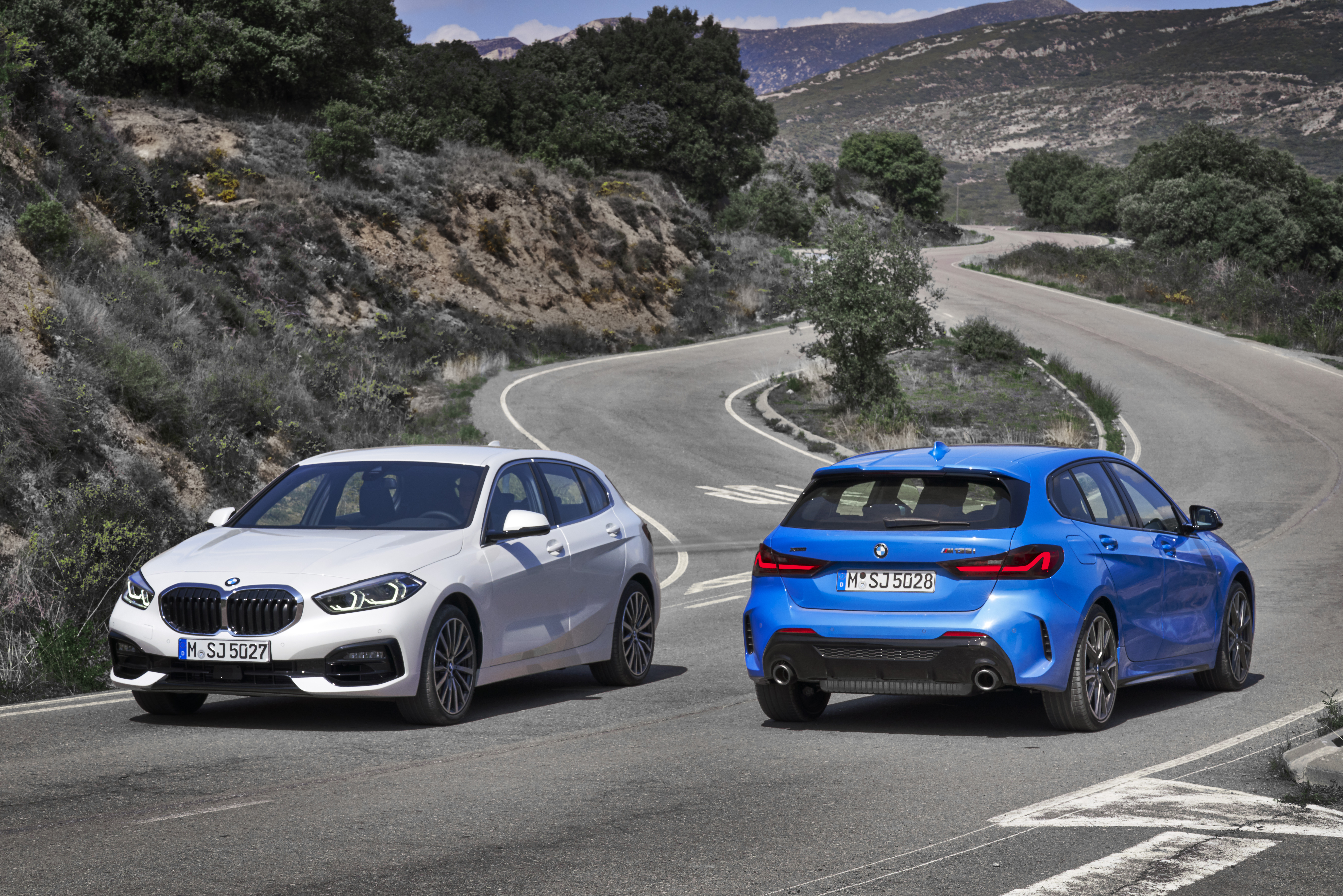
Panoramic roof available as an option
For the first time a panoramic roof is available as an option for the BMW 1 Series. With a 0.7m glass area, the roof features an electrically operated roller blind to provide shading along with a net wind deflector to reduce noise when open.
Three equipment lines and one flagship model
The BMW 1 Series offers SE, Sport and M Sport trims as well as the range-topping M135i xDrive, all of which differ from one another in both exterior and interior details. SE comes with matt black air guide grilles on the front bumper, while Sport adds exclusive air inlets finished with a high-gloss black, the kidney grille features a chrome frame with high-gloss black struts. The M Sport features aerodynamic bodystyling as well as satin aluminium struts in the kidney grille whilst the seat upholstery is in Dakota leather with contrast stitching. The range-topping BMW M135i xDrive incorporates the mesh-design BMW kidney grille and frame, exclusive front bumper air inlet clasps, and wing mirrors all finished in Cerium Grey. Exclusive black high-gloss rear diffuser with mesh design, and side sill covers featuring exclusive M135i xDrive black high-gloss inserts complete the look. Inside there’s the M Sport seat with integrated headrest design finished in Trigon Cloth/Alcantara Anthracite upholstery.
Transfer of technology from the BMW i3s
The new BMW 1 Series features the actuator contiguous wheel slip limitation (ARB) technology used in the BMW i3s. This is the first time it has been used in a combustion-engine car and it has the effect of significantly improving traction when pulling away, cornering or when driving in the wet. The system works in close tandem with the DSC system to significantly reduce power understeer.
ARB is assisted in its task by BMW Performance Control (yaw moment distribution). This feature, which is also included as standard on the BMW 1 Series, gives it more agile handling by intelligently applying the brakes at the wheels on the inside of the bend. This suppresses any initial understeer and gives the car neutral steering behaviour. Alternatively, drivers can engage the DSC system’s propulsion-optimised Dynamic Traction Control (DTC) setting, which allows a greater degree of slip at the driven wheels and thereby paving the way for a ‘sportier’ driving style.
Two models with BMW xDrive intelligent all-wheel drive
ARB technology and BMW Performance Control also feature on the BMW 120d xDrive and the BMW M135i xDrive, which are both equipped with BMW xDrive intelligent all-wheel drive as standard. This can split drive power 50:50 if necessary and is designed to ensure predictable handling in all driving situations. This applies even if the Driving Experience Control switch is set to Sport mode, DTC is selected or DSC is deactivated.
In Comfort or Eco Pro mode, drive is split as required, while keeping fuel consumption as low as possible. Fuel economy is therefore improved without any discernible impact on driving dynamics or traction. As well as the all-wheel-drive system, standard specification for the BMW M135i xDrive includes a newly developed mechanical Torsen limited-slip differential, which gives the car an even sportier edge.
The differential is integrated into the standard eight-speed Steptronic Sport transmission on the BMW M135i xDrive and also features a Launch Control mode that puts the full peak torque of 450Nm on tap in first and second gear.
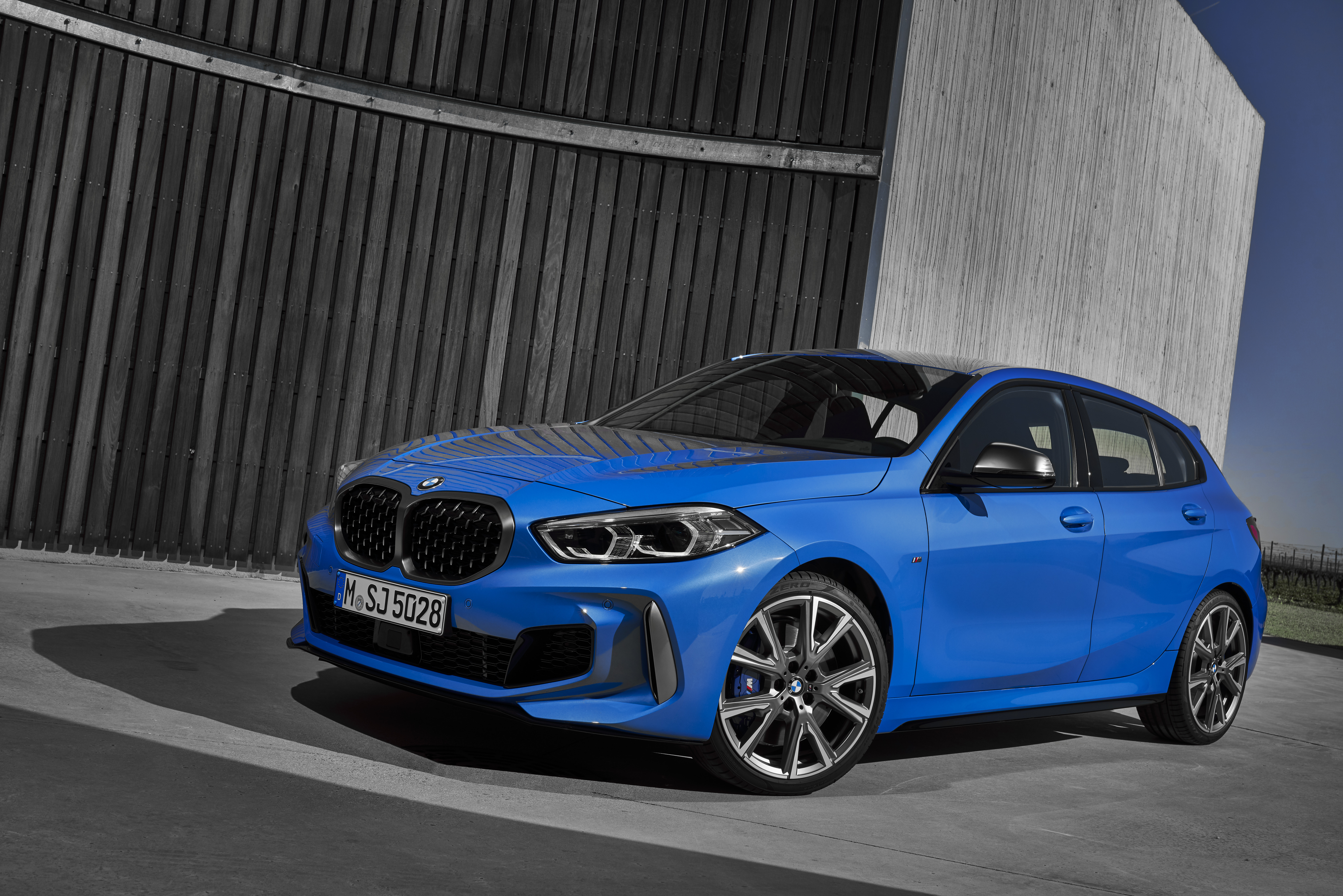
Increased body rigidity
Making intelligent use of aluminium – for the bonnet and tailgate for instance – combined with high-strength steels, has enabled BMW to shave as much as 30 kilograms off the weight of the new BMW 1 Series compared to its predecessor, at the same time as further increasing the torsional stiffness of the body structure.
BMW M135i xDrive – superior handling and braking capability
The positive dynamic impact of the rigid body is even more pronounced on the ultra-sporty, range-topping BMW M135i xDrive that features a number of chassis improvements to improve handling and ride quality. This all combines with the standard M Sport suspension and the M Sport steering with its more direct ratio and even sharper response. Meanwhile, the M Sport brakes offer excellent stopping power at all times. The M Sport steering and M Sport brakes are also available for M Sport models in the M Sport Plus package.
Three suspension options
Besides the standard suspension and the M Sport suspension with 10mm reduction in ride height, the new BMW 1 Series can also be specified with the Adaptive suspension including VDC (Variable Damper Control) as an option (not available in conjunction with 19-inch alloy wheels). This lets the driver choose from two different damping response settings via the Driving Experience Control switch, namely Comfort – for better ride comfort in poor road conditions – or Sport for a very sporty drive.
Engine line-up
The all-new BMW 1 Series is powered by three-cylinder and four-cylinder engines with a choice of three diesel and two petrol engines at launch. Improvement in the power units’ efficiency have resulted in higher real-world fuel economy and lower exhaust emissions. Performance characteristics have likewise been enhanced and, in some cases, output has been increased too. The line-up is spearheaded by the newly developed power unit for the BMW M135i xDrive, the BMW Group’s most powerful four-cylinder engine.
In the 1.5-litre three-cylinder engine powering the entry level BMW 118i, modifications have cut CO2 emissions by 29g/km at the same time as boosting maximum power output by 4hp to 140hp. The power unit, which is five kilograms lighter than the one it replaces, generates peak torque of 220Nm. The BMW 118i accelerates from zero to 62mph in 8.5 seconds and goes on to a top speed of 132mph. It posts combined fuel consumption of 47.1-40.4mpg with CO2 emissions of 123-114g/kg.
The newly developed 2.0-litre unit under the bonnet of the M135i xDrive model is BMW Group’s most powerful four-cylinder petrol engine. It delivers 306hp with the help of BMW TwinPower Turbo technology and peak torque is 450Nm. It accelerates from zero to 62mph in 4.8 seconds, while top speed is limited to 155mph. The M135i xDrive returns 35.3-34.4mpg and emits 157-155g/km of CO2.
Three diesel units will be available for the new BMW 1 Series from launch and upgrades have brought about a reduction in fuel consumption – and therefore CO2 emissions – of around five per cent, at the same time as lowering other pollutant emissions.
The BMW 116d is powered by a 1.5-litre 116hp three-cylinder engine with a maximum torque of 270Nm, while returning 61.4-54.3mpg and emitting CO2 of 103-100g/km. This is sufficient for a top speed of 124mph and a zero to 62mph benchmark time of 10.3 seconds (10.1 seconds with the seven-speed Steptronic dual-clutch transmission).
The BMW 118d and 120d xDrive, which feature two-stage turbocharging, are powered by 2.0-litre four-cylinder diesel engines. The 118d returns 60.1-51.4mpg with CO2 emissions of 111-108 g/km. The output of the BMW 118d peaks at 150hp while maximum torque is 350Nm. The zero to 62mph sprint takes 8.5 seconds (8.4 seconds with eight-speed Steptronic transmission) and top speed is 135mph (134mph with Steptronic).
The BMW 120d xDrive features BMW xDrive intelligent all-wheel drive and the eight-speed Steptronic automatic transmission as standard. Its four-cylinder power unit produces 190hp and a peak torque of 400Nm. The 120d xDrive accelerates from zero to 62mph in 7.0 seconds reaching a top speed of 143mph. Combined fuel consumption is at 51.4-48.7mpg while emitting 119-117g/km CO2.
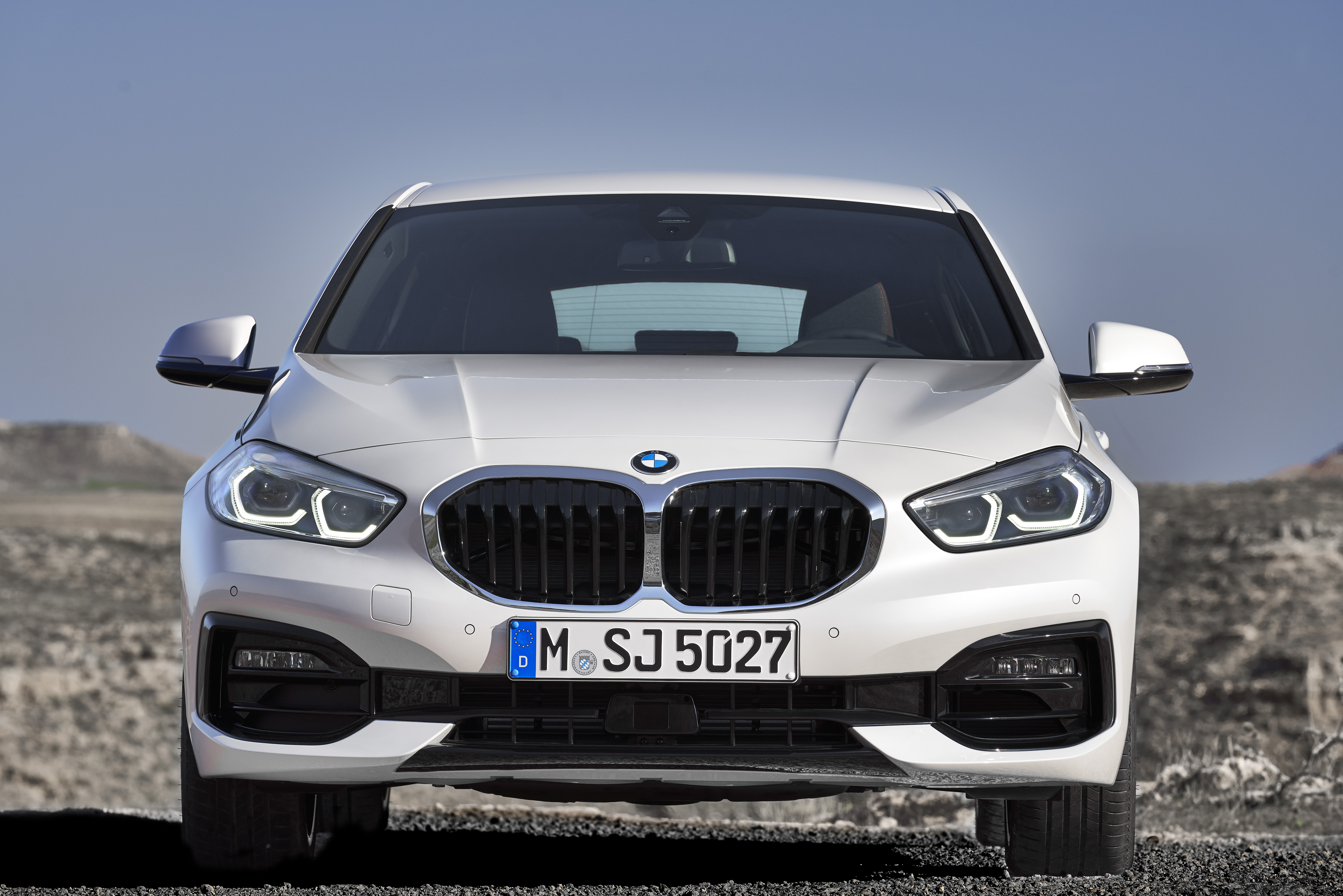
First ever deployment of three different transmission technologies
The arrival of the new BMW 1 Series marks the first time three different transmission technologies have been employed in the range. In the BMW 116d, BMW 118d and BMW 118i, the engine’s power is delivered via an upgraded six-speed manual gearbox. New to the BMW 1 Series line-up is the highly sophisticated seven-speed Steptronic dual-clutch transmission, which can be specified as an option for the BMW 116d and the BMW 118i. This allows faster gear changes with no interruption in power delivery and the long seventh gear keeps revs low, helping to lower fuel consumption when out of town or on the motorway. Further improvements have been made to the shift comfort and acoustic properties of the eight-speed Steptronic Sport transmission fitted as an option in the BMW 118d and as standard in the BMW 120d xDrive and the BMW M135i xDrive.

Intelligent connectivity increases efficiency
Intelligent connectivity enables the two automatic transmissions to adapt their shift strategy according to the planned route and driving situation. If the BMW 1 Series is equipped with Active Cruise Control, both transmissions will factor in the data from this system and the standard Navigation, to avoid unnecessary gear changes in a quick succession of bends. When approaching a vehicle ahead, they also shift down early in order to use engine braking to reduce speed.
The coasting and Auto Start Stop functions also take their cue from the data supplied by the navigation system, the front-mounted camera and the sensors for the optional driving assistance systems. The coasting function is available with the Driving Experience Control switch set to COMFORT mode as well as in ECO Pro mode, and will only decouple the powertrain in situations where performance and comfort are not compromised. If the driver suddenly lifts off the accelerator, the powertrain stays connected so that engine braking can be used to support the ensuing deceleration. For the same reason, powertrain disconnection is also prevented when approaching a junction or a vehicle ahead. Inefficient engine shutdown by the Auto Start Stop function when stopping briefly at junctions or roundabouts is also avoided. Plus, the movement of vehicles ahead is registered in order to determine the ideal moment for stopping and starting the engine.
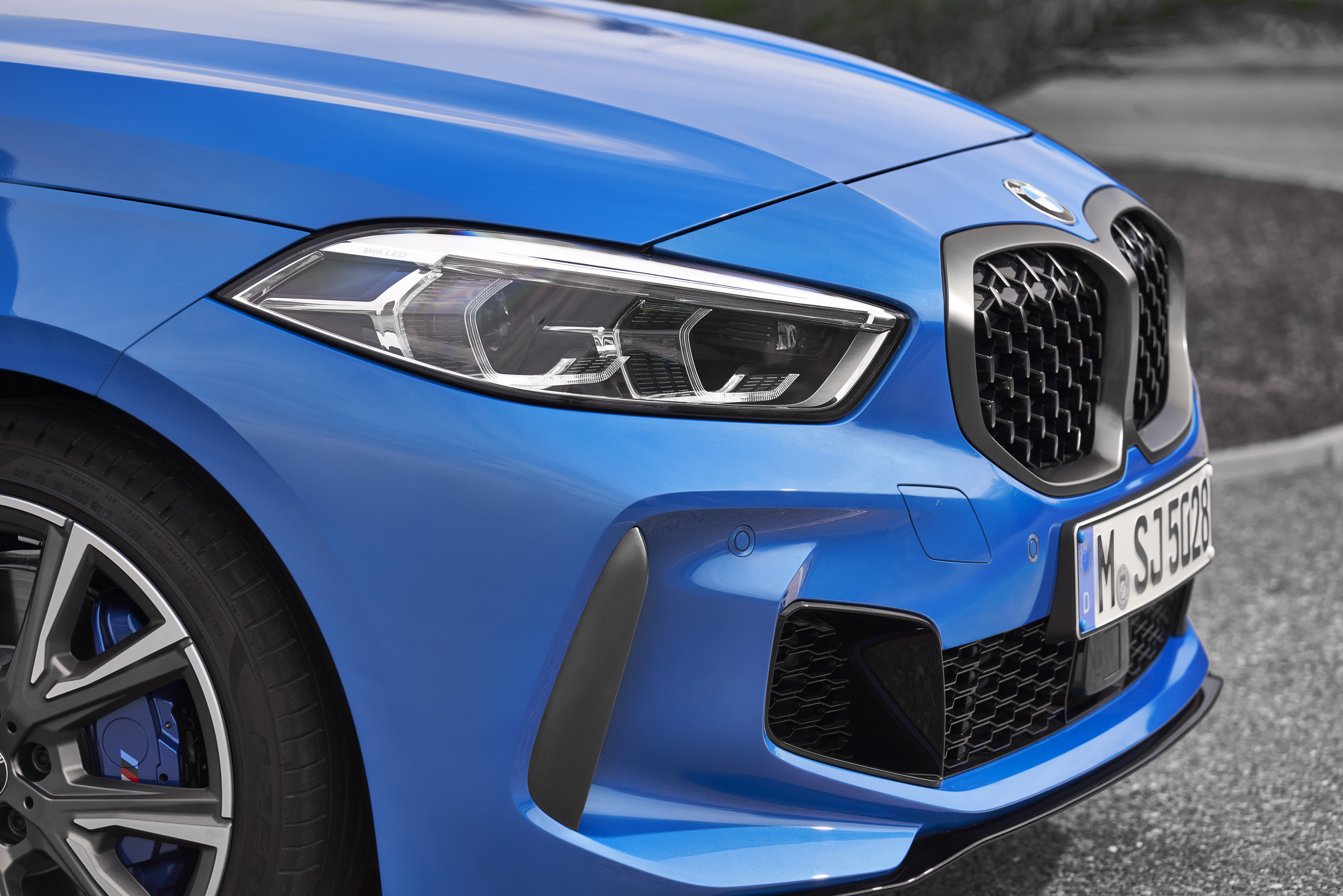
Driver assistance systems
The new, third-generation BMW 1 Series benefits from an array of new, innovative driver assistance systems that combine camera images and data gathered by radar and ultrasonic sensors to either alert the driver to hazards or minimise the risk of an accident by means of corrective braking and steering.
Cruise Control with braking function is standard where as Active Cruise Control with Stop & Go is available as an option. The latter is operational at motorway speeds and is able to brake models to a stop if necessary – and also pull away again, either by itself or at the driver’s request, depending on how long the car is stationary for.
Standard equipment includes collision and pedestrian warning with city braking function, which also alerts the driver to the presence of cyclists. Lane Departure warning with steering impulse is also standard as well as speed limit information. The optional Driving Assistant additionally comprises of the Lane Change Warning with blind spot detection system, which prompts the driver to guide the car back onto the correct path by means of a visual warning and, if necessary, a steering input. The Driving Assistant’s remaining functions include rear collision warning and crossing traffic warning, which reduces the risk of a collision when reversing into roads obstructed from the driver’s view.
BMW Head-Up Display makes debut on 1 Series
The BMW 1 Series is now offered with the option of the BMW Head-Up Display and Park Distance Control (PDC), which uses sensors at both the front and rear to provide visual and acoustic signals to prevent collisions with obstacles located to the side or rear of the vehicle. A rear-view camera is an option. The optional Parking Assistant goes further still by offering automatic assisted parking in spaces that are either parallel or perpendicular to the road.
Making its debut in the premium compact class is the innovative reversing assistant, which offers the highly convenient option of automated reversing in confined spaces or situations where the driver does not have a clear view, such as multi-storey car parks or entrances to courtyards. To do this, it stores the steering movements for any section the car has just driven forward along at no more than 22mph. The system is then able to reverse the vehicle for distances of up to 50 metres by steering it along exactly the same line it took when moving forward. All the driver has to do is operate the accelerator and brake pedals and monitor the vehicle’s surroundings.
BMW Digital Key
The Digital Key allows the BMW 1 Series driver to use a smartphone instead of a key if the Comfort Access option is specified. With this technology the car can be locked and unlocked from selected smartphones using Near Field Communication (NFC) technology. Holding the smartphone up to the door handle opens the car even if the phone battery is dead. The engine can be started as soon as the phone has been placed in the smartphone or wireless charging tray. Accessible via BMW Connected once the owner’s identity has been checked, the Digital Key offers unrivalled flexibility, as the driver can share it with up to five other people. The BMW Digital Key is available for top-of-the-range NFC-capable Samsung Galaxy smartphones running Android 8.0 and above. Alternatively, the BMW Key Card can be used.
BMW Intelligent Personal Assistant
The BMW Intelligent Personal Assistant forms part of the control concept for the new BMW 1 Series. Uttering the short prompt “Hey BMW” allows drivers to operate their car, access its functions and obtain information simply by speaking. The range of available functions and skills is constantly expanding as part of regular updates, which can be carried out over the air on a smartphone and in-car by Remote Software Upgrade.
The BMW Intelligent Personal Assistant is a digital character with his own personality, who can learn routines and habits and subsequently apply them in the appropriate context or provide casual conversation. He helps the driver, learns their preferences and is familiar with their favoured settings – e.g. for the seat heating or the places they drive to frequently using the navigation system. One unique feature over other digital assistants is that drivers can give this one a name. It can also provide information on traffic jams along the route, searches for cafs in the area and find free parking spaces at the destination.
State-of-the-art infotainment and sound systems
The in-car audio experience required is provided by the standard BMW Stereo sound system with its six speakers and 100-watt amplifier or the optional BMW HiFi sound system with ten speakers and 205 watts. The Harman/Kardon surround sound system with 464 watts of audio power and a total of 16 speakers can also be found on the options list.
Connected Navigation for a more relaxed arrival
Connected Navigation services allow internal and external information to be factored into route planning. BMW 1 Series drivers will be able to send destinations from various apps straight to their car’s navigation system. The most important destinations will be stored in BMW Connected and synchronised with the car, so that key addresses can be accessed from any device at any time.
The Parking Space Assistant is a smart helper that proposes various parking options to the driver in good time before they reach their destination. This service includes providing information on the nearest multi-storey car park as well as suggesting routes offering a particularly good chance of finding a parking spot close to the destination.
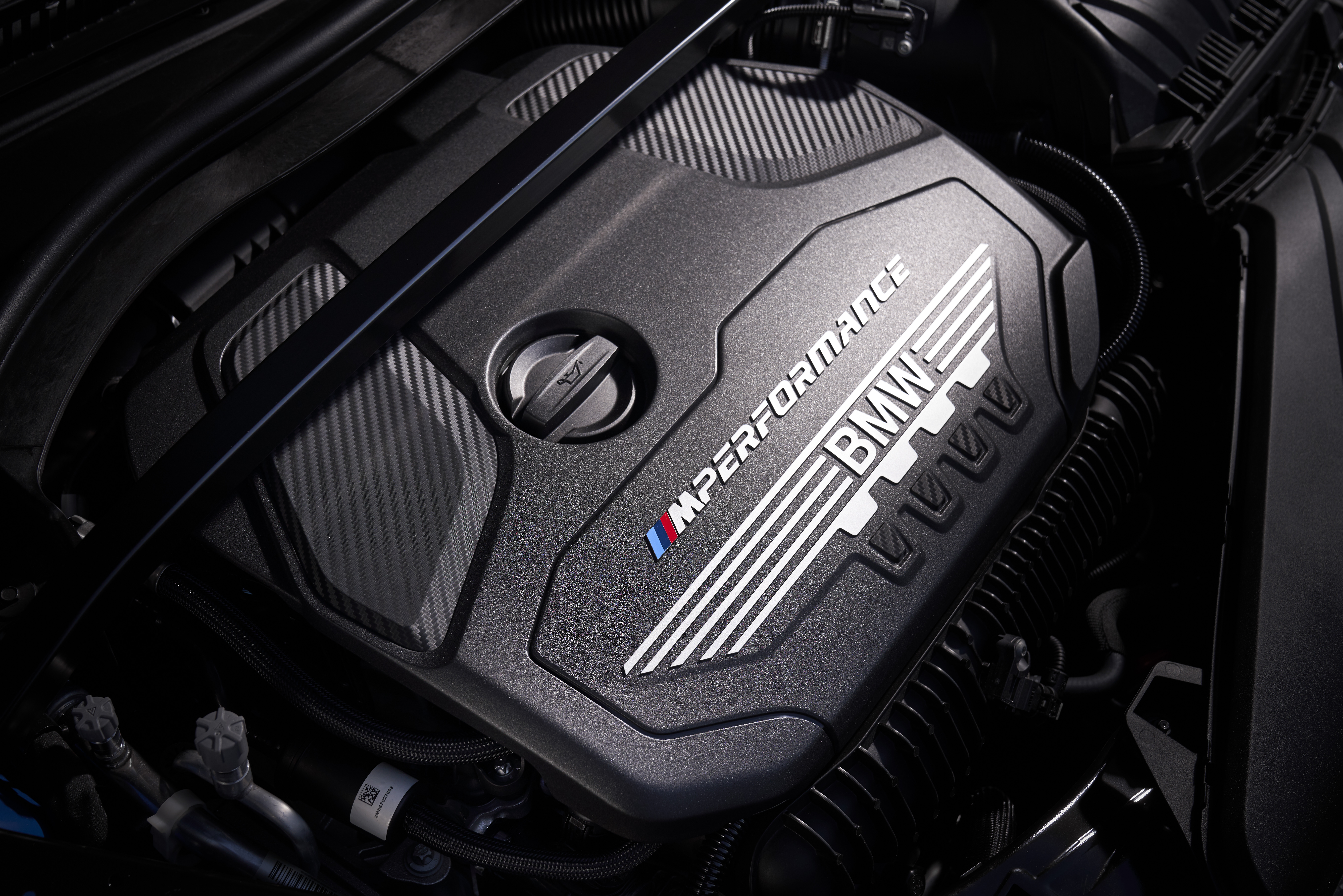
The BMW Operating System 7.0 display and control concept
The new BMW 1 Series allows drivers to use a variety of operating methods, depending on the situation and personal preferences. In addition to the usual buttons on the centre console and steering wheel. The BMW Live Cockpit Plus is standard and includes features such as a Touch Controller, navigation system, two USB ports for data transfer and a WiFi interface. The control display is 8.8-inch and features a touchscreen, whilst the instrument cluster has a 5.7-inch colour display.
As part of BMW Live Cockpit Plus the new BMW 1 Series includes a host of connected services as standard, Emergency Call, Teleservices, Over-the-air and USB map updates, BMW App connectivity and Intelligent Voice assistants. In addition to this we see the introduction of the BMW Connected Package Plus as standard. This features elements drivers are accustomed to, such as Remote Services, Real Time Traffic Information, but with the addition of Concierge Services and Apple CarPlay Preparation.
Apple CarPlay Preparation will now be standard on all new BMW 1 Series models. This service will be included for one year from build, but then renewable via the BMW ConnectedDrive portal thereafter, at either one year, three years or lifetime subscriptions.
The BMW Live Cockpit Professional is standard on the M135i M Performance model and optional on all others. This includes an instrument cluster behind the steering wheel with a screen size of 10.25 inches coupled with a 10.25-inch Control Display. This equipment package also features an adaptive navigation system and a hard-drive-based multimedia system.
On the BMW Live Cockpit Professional the standard connectivity increases further, with the standard inclusion of BMW Connected Package Professional. This builds on the services offered in the BMW Connected Package and includes additional functionality including, BMW Intelligent Personal Assistant, On-Street Parking Information, Connected Navigation and Intelligent Vehicle Functionality, which learns drivers habits and learns rules.
BMW Live Cockpit Professional drivers get all the benefits of the new BMW Operating System 7.0. It is customisable to give personalised displays. In the main menu on the Control Display, the driver can configure up to ten pages, each showing two to four tiles with live content. Both the content and the graphics are personalised to an even greater degree – even the vehicle mock-up matches the actual model colour and equipment line. The Control Display graphics adapt depending on the operating method and the voice control system (based on natural language understanding) is better than ever before.
